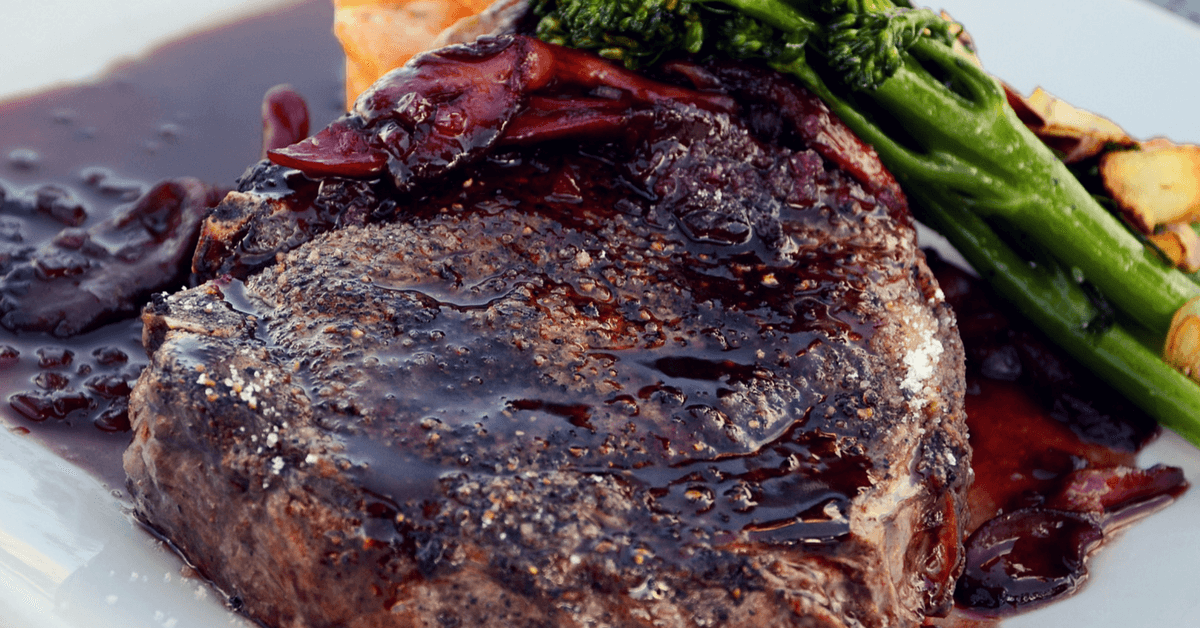When it comes to weight loss, we know that fad diets are a big no-no simply because they are often impractical, but more so that they can often be very unhealthy. That said, a good diet to achieve healthy weight loss is different for everyone, although one diet that has been getting more buzz lately is the high-fat ketogenic diet. Here’s how to know if such a diet fits a particular client of yours, or if they may be better off with something else.
What exactly is the ketogenic diet?
The ketogenic diet involves severely restricting carbohydrate intake to about 10-20 grams per day. You make up those calories with a disproportionately high fat intake, along with moderate protein consumption.
The fundamental idea behind such restriction of carbohydrates is to put the body in a state of ketosis, which is when the body increases conversion of fat by the liver into compounds known as ketone bodies. Normally, the brain uses primarily glucose as energy, but when carbohydrates (and thus glucose) are limited, ketone bodies can instead be used as an alternative energy source.
The brain is capable of using these ketone bodies. As you may have guessed, the fat necessary for the production of ketone bodies need to come from somewhere. Usually that comes from the stored body fat you have or excess sources from your diet.
How the ketogenic diet can help your client
If you and your client are considering following the ketogenic diet, you need to consider what it is that they hope to achieve. Here are a few conditions where a ketogenic diet may be useful.
It may help your client lose weight
Findings published in the Annals of Internal Medicine found that low-carb diets (like the ketogenic diet) are better for losing weight than low-fat diets. That’s because a ketogenic diet helps suppress appetite due to the high fat and protein, both of which provide greater satiety than carbohydrates.
Ironically, though, the adjustment period of the ketogenic diet in the beginning can be difficult, as hunger pangs and cravings can be heightened initially. However, more recent studies published in the New England Journal of Medicine disproved those concerns, emphasizing that weight loss can occur regardless of which macronutrient is reduced. What may be different, then, is the metabolic change that occurs when following a ketogenic diet, as opposed to a more balanced diet.
Studies have shown that when carbs are reduced and fat and protein consumption increase, hunger is blunted, which leads to fewer calories consumed overall. When your client eats fewer calories, there’s a good chance they will reduce body weight and lose fat just like they want.

But while these findings seem promising, the flip side is, the weight loss could probably be more an effect of increased protein intake--which is more biologically costly to digest and makes your client feel full--not necessarily because of the low-carb intake.
Plus, the rapid weight loss typically achieved when starting a ketogenic diet for the first time comes primarily from water (as one molecule of glycogen is lost, so do three molecules of water). This effect usually disappears after a few weeks, after which weight loss may stall.
It may improve your client’s cholesterol profile
Older populations may be more interested in improving heart health than losing a couple of inches around their waist. Ketogenic diets have been shown to improve blood lipid profiles significantly in both healthy and obese men.
One of the most powerful indicators of heart disease is triglyceride levels, which are actually not affected by fat intake. Rather, it is the number of carbs we consume that drive up this value.
Ideally, a healthy-looking cholesterol profile has high HDL (high-density lipoprotein) level and low LDL (low-density lipoprotein) and triglycerides.
One of the best ways to increase HDL levels and reduce triglyceride levels is to eat healthy fats, including saturated fats.
Contrary to the outdated popular belief, consumption of dietary cholesterol does not have a detrimental effect on blood cholesterol values. It bears reminding that cholesterol is a carrier compound and not a fat molecule. A study in the Journal of the Academy of Nutrition and Dietetics noted differences in cholesterol parameters depending on whether the subject maintained a low-fat or high-fat diet. When subjects were on high-fat diets, there were improvements to HDL levels, as well as a reduction in triglyceride levels, both of which are good indicators of low cardiac risk.
When the ketogenic diet may not work for your client
The ketogenic diet isn't for everyone or for all goals. For example, if your client wants to build lean mass, the ketogenic diet will not be appropriate. Building mass and sticking with a high-fat diet would counteract each other. One is like pressing the brake and the other is like pressing the accelerator in your car at the same time.
The reason is, carbohydrates are necessary for building muscle since glycogen (stored in muscle and the liver) support hard training. Carbohydrates also promote an insulin response, which allow amino acids and glucose to enter muscle cells and initiate the process of muscle protein synthesis.
Additionally, due to the nature of the ketogenic diet, these issues may arise:
* Mood swings: After removing carbs from the diet, your client likely won’t experience those “sugar highs” and feel-good endorphins from sugary treats. Expect a short period of irritability and feeling on edge. Paleo-based protein bars are an excellent option to keep cravings to a minimum.
* Lack of food diversity: In the beginning, it can be difficult to figure out which foods can satisfy your client. Encourage exploration and eating more low-carb veggies and fats (such as bacon and heavy cream). Pro tip: If you haven’t tried bacon dipped in dark chocolate, you’re missing out.
* Keto breath: Having a high concentration of ketone bodies can cause the breath to have an unusual smell, ranging from mildly fruity to more a chemical-like smell (like the acetone found in nail polish remover). Acetone is one of the ketone bodies produced from the conversion of fat, but it’s not dangerous when the body make it.
* Decreased physical performance: This reduction in physical capacity is usually short-lived and is likely to occur during the adjustment period to the ketogenic diet. Over time, the body becomes more efficient at producing and utilizing ketone bodies, which, along with other adaptations of metabolism and dietary considerations, allow a reasonable return to normal levels of physical performance. Advise your client to stick to the diet for more than two weeks.

If you are working with a client that has diabetes, you are not qualified to advise your client to follow the ketogenic diet or anything to cure diabetes. Rather, you must work in close collaboration with their diabetes management team to decide if the ketogenic diet makes sense and is worth a shot.
Can your client train in a ketogenic fasted state?
Fats can be used as a fuel source for longer duration, low-intensity activity, making the diet suitable for athletes such as ultra-endurance athletes (think marathon runners). When there’s no external fuel source to help your workout, your body turns to stored body fat to convert into usable energy. The body, however, is very poorly equipped to convert fat directly to glucose. It must compensate with the production of ketone bodies.
The problem is, when training very hard in a fasted state, some muscle may also be devoured during this training period, as amino acids from muscles can also be converted to glucose. There is some evidence that supplementing with branched-chain amino acids (BCAAs) before and/or during fasted exercise may decrease the degree to which catabolism occurs, primarily as fat oxidation is increased (common on a keto diet).
Keep in mind the particular performance needs of your client. If your client is a casual gym-goer, they likely wouldn’t be training hard enough to be severely affected by training in a fasted, keto state. However, if they are a high-level athlete who requires fuel for maximal power output (e.g., sprinter or powerlifter), training in a fasted keto state can impair performance and results. If the client needs to constantly increase their 1RM, the ketogenic diet is not for that client.
If your client on a ketogenic diet chooses to eat before their workout, you can suggest keto-friendly, pre-workout nutrition techniques to help them perform better while remaining in ketosis. Coconut oil is a popular choice for that because it's rich in medium-chain triglycerides (MCT), which can be converted directly to ketone bodies in the liver. Since these ketone bodies are the preferred energy source for the ketogenic diet, coconut or MCT oil could work as pre-workout nutrition.
Remember to keep a close eye on electrolyte levels
Not many people keep a close eye on their electrolyte levels. Most people assume everything is just fine until it’s too late or something goes wrong.
The fact of the matter is, deficiency of electrolytes is extremely common, even more so on low-carb style diets, including the ketogenic diet.
When your client removes certain foods from the diet, it could result in an insufficient intake of vital electrolyte minerals, such as potassium from bananas. This means the client has to be more cognizant of making the appropriate substitutions to ensure proper and complete nutrition. Then there’s the increased sweating and urinary excretion. When starting the ketogenic diet, the body will drive fluid out of your muscles to hunt for more glucose that might be stored there.
Instruct your client to increase salt and potassium intake the first one to two weeks when transitioning to a ketogenic diet. It might be helpful to focus on eating more foods that are rich in essential electrolytes, such as avocados (for potassium), almonds (magnesium), and healthy sources of sodium and other minerals, such as sea salt (one teaspoon per day is usually enough and can be reduced with time).
There are actually different kinds of ketogenic diets
If your client ends up wanting to try a ketogenic diet, it's worth learning about the many different modifications of the ketogenic diet to best advise your client.

Most people who follow a ketogenic diet follow the standard ketogenic diet (SKD). While it may be suitable for the majority of people who want to try it, a small subset may require a modified approach. These may be athletes who want lose fat while also keeping muscle growth high and performance unimpaired. In particular, the two variants are:
The targeted ketogenic diet (TKD)
The targeted keto diet utilizes “targeted” nutrition. This target period is usually the pre-workout phase and involves consuming 25-50 grams of fast-digesting, high GI food about 30-60 minutes before a workout. Focus on glucose-containing foods like bread and pasta, as it facilitates glycogen storage in muscles.
Most people will not require TKD and do just fine of the standard keto diet (SKD). However, if your client wants to build muscle and be able to train as hard as possible on the ketogenic diet, TKD might be worth a try.
Cyclic ketogenic diet (CKD)
The cyclic ketogenic diet (CKD) is an advanced diet technique that’s used primarily by bodybuilders to continue losing body fat, while keeping metabolic health and avoiding muscle loss. This diet typically involves following true ketogenic principles for a few days at a time (3-5 days), then alternating with higher carb days (1-2 days).
The CKD is often conducted in phases. During the first phase, high-carb days may only include about 50 grams of carbs daily, but during subsequent carb-loading phases, this number can jump all the way up to 500 grams each day. Keep in mind that a typical high-carb phase only consists of 1-2 days of high-carb "refeeds" and should only be employed if your client’s workout sufficiently exhausts muscle glycogen during the previous five days of low-carb eating.
Although TKD and CKD can look attractive for people who work out, not every athlete needs or benefits from them.
Overall, the ketogenic diet is a viable diet if your client can adhere to it.
Advise them to stick to it for one to two weeks to adjust to it before they change their mind. Some people get great results from it, but it isn’t a good fit for everyone. Be sure to work with your client and monitor their progress, energy levels, and adherence every week to make the necessary adjustments.










